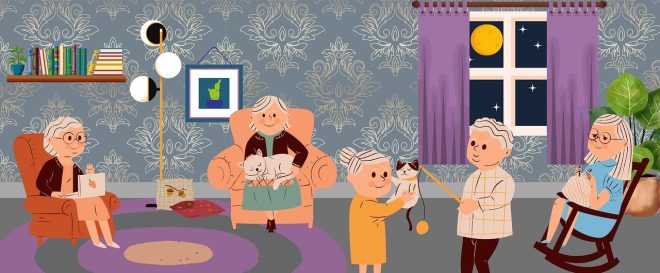10 Factors Influencing the Value of a Nursing Home Abuse Claim

When families make the difficult decision to place a loved one in a nursing home, it’s done with trust and the expectation that their family member will receive professional, compassionate care. However, the stark reality is that not all nursing homes uphold this sacred trust. Across the nation, stories surface of elderly residents facing neglect, abuse, or even exploitation in the very places meant to protect them. Such revelations often lead to a tumultuous storm of emotions, from anger to guilt, and an immediate call to action. One critical step in this journey of seeking justice and closure is understanding the potential value of a nursing home abuse claim. This value isn’t just about money; it’s a reflection of the gravity of harm done and the imperative to hold the wrongdoers accountable. In navigating this often murky path, being aware of the influencing factors can offer clarity and direction. Let’s delve deeper into what determines the value of these claims, ensuring that families are equipped to advocate for their loved ones with confidence and purpose.
1. Nature and Extent of Injuries
Physical injuries, evident through marks, bruises, or fractures, can be alarming indicators of abuse. However, beneath these tangible signs often lie deeper psychological and emotional scars—trauma that manifests in sleepless nights, anxiety attacks, or even withdrawal from social interaction. The combined toll of these physical and psychological injuries often forms the basis for determining compensation, reflecting the multi-dimensional pain endured by the victim.
The legal system allows for claims if negligence can be proven. This means that the nursing home in question failed in its duty to provide the necessary level of care and protection, resulting in harm to the resident. Therefore, you can consult a lawyer to discuss the specifics of your case and if negligence can be established. However, in case of intentional abuse, rather than mere negligence, the compensation can be higher due to the more serious nature of the misconduct. You can visit www.lawfirm.com to understand your rights better and perhaps connect with an experienced lawyer.
2. Medical Expenses
Medical costs cover more than just immediate treatments. From specialized therapeutic interventions to longer-term care, victims may face a range of medical needs as a result of abuse. Some might even need specialized equipment or adaptions to their homes, incurring added expenses. When calculating the claim’s value, both immediate and future projected medical expenses play a crucial role, highlighting the long-term financial implications of abuse.
3. Duration of the Abuse
A solitary incident of neglect, while distressing, has a different implication than sustained abuse over months or years. Extended durations of mistreatment signal deeper organizational flaws within the nursing home. In such scenarios, the victim’s prolonged suffering and the facility’s continued negligence combine to amplify the claim’s worth.
4. Evidence and Documentation
A compelling narrative built on robust evidence can significantly strengthen a claim. Detailed records, be it through photos, doctor’s notes, or personal journals, provide an irrefutable testament to the abuse. Further, testimonies from other residents or staff can corroborate these claims, presenting a comprehensive case that becomes hard for any defense to refute.
5. Quality of Legal Representation
In the intricate web of legal proceedings, having a seasoned attorney is invaluable. They not only understand the legal landscape but also possess insights into negotiation tactics, potential defenses, and jurisdiction-specific nuances. Their expertise ensures that the claim is presented most compellingly, maximizing the chances of a favorable outcome.
6. Past Record of the Facility
A facility’s historical conduct can offer telling insights. If there’s a pattern of neglect or a history of abuse complaints, it portrays a chronic issue. Such repeated infractions not only increase the current claim’s value but also press for more stringent actions against the facility, advocating for systemic change.
7. Pain and Suffering
Beyond the direct repercussions of abuse lies the intangible realm of emotional and psychological trauma. Constant feelings of fear, recurring episodes of anxiety, and a perpetual sense of vulnerability profoundly affect a victim’s well-being. These experiences, though challenging to monetize, significantly influence the claim’s valuation, urging acknowledgment of the silent sufferings.
8. Loss of Quality of Life
Post-abuse, many elderly individuals find their once-cherished activities now fraught with challenges. They might retreat from social circles, grapple with mistrust, or even battle self-blame. This drastic decline in the quality of life, encompassing both social and personal dimensions, is essential to recognize and account for when determining claim value.
9. Punitive Damages
Punitive damages are more than just monetary penalties; they’re loud statements against abhorrent behavior. In cases where the facility’s misconduct is exceptionally vile, these damages not only increase the claim’s worth but also send a clear message to other institutions about the consequences of similar transgressions.
10. Insurance Limits
Every claim, regardless of its merits, operates within the constraints of insurance policy limits. While it’s essential to aim for comprehensive compensation, understanding these insurance boundaries is crucial. Families need to strategize within these limits, ensuring they extract the maximum possible value for their claims.
11. Rehabilitation and Counseling Costs
The aftermath of abuse in a nursing home isn’t just about healing physical wounds; it’s also about rebuilding trust, self-worth, and emotional stability. Many victims benefit from counseling or therapy sessions, which can be essential for their mental well-being and recovery. These sessions, often a blend of emotional, psychological, and sometimes physical rehabilitation, come with their own set of costs. When tabulating the overall expenses incurred due to abuse, the expenses for these therapeutic interventions become a significant addition.
12. Family Impact and Loss of Companionship
The ripple effects of nursing home abuse extend beyond the immediate victim. Families grapple with a mix of guilt, anger, and sorrow, seeing their loved ones suffer. The emotional toll on family members can sometimes parallel that of the direct victim, especially when considering the loss of companionship. This loss isn’t just about time missed but about the qualitative degradation of the relationship due to the victim’s trauma. Such intangible yet profound effects hold considerable weight when determining the comprehensive value of a nursing home abuse claim.
Summary
Nursing home abuse is a distressing breach of trust that affects numerous elderly residents and their families. When seeking justice, understanding the potential value of the resulting claim is crucial. Factors like the nature of injuries, evidence, the duration of abuse, and the facility’s past record significantly influence a claim’s value. Equipped with this knowledge and aided by professional legal representation, families can navigate the complexities of these claims. By doing so, they not only seek reparation for their loved ones but also shine a light on a critical issue, urging facilities to maintain the highest standards of care.



